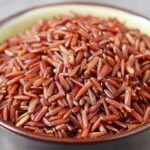In traditional medicine, pig offal is considered a thermogenic food that can provide nutritional benefits, boost blood supply, and strengthen the health of those recovering from illness or suffering from anemia.

However, this delicacy also poses potential health risks as it may contain toxins and bacteria if not thoroughly cleaned. Improper consumption can lead to toxin buildup, skin eruptions, constipation, and issues related to the liver, kidneys, and cardiovascular system.
Here are some essential principles from the perspective of traditional medicine to enjoy pig offal without compromising your health:
1. Choose fresh offal: Ensure that the offal is fresh and not spoiled. Buying low-quality offal that is infected with microorganisms can lead to toxin buildup, harming your liver and kidneys.
2. Clean and deodorize: When preparing offal, thoroughly clean it to remove any remaining blood, impurities, and hidden bacteria. Soak the offal in diluted salt water or ginger water to eliminate the pungent odor, and boil it before cooking to get rid of bacteria and impurities. If possible, soak the offal in lemon or vinegar to neutralize odors and sterilize.
3. Thoroughly cook: Do not eat raw offal as it may contain harmful bacteria. Cooking thoroughly ensures the elimination of any harmful substances and improves digestibility. Whether stir-fried, steamed, or boiled, ensure sufficient cooking time to eradicate any surviving bacteria.
4. Avoid overeating: While offal is delicious and nutritious, excessive consumption can lead to heat toxicity, exacerbating issues like high cholesterol, cardiovascular problems, gout, skin eruptions, and constipation. With approximately 400mg of cholesterol per 100g of offal, overindulgence can contribute to cholesterol excess, increasing the risk of atherosclerosis, myocardial infarction, and stroke. Therefore, it is not recommended for the elderly, patients with cardiovascular diseases, or those suffering from gout.
A sensible diet includes offal 1-2 times a week, complemented by light and easily digestible dishes. Avoid overheating the body with herbs like mugwort or vegetables like basella and cucumber.
5. Timing is key: Consuming offal in the evening can cause digestive issues and increase body heat. It is best to enjoy this delicacy in the morning or at noon when your body has ample energy for digestion and absorption.
How Much Should You Eat?

Most types of offal are rich in protein, fat, and vitamin A, providing ample iron to combat iron deficiency anemia and boost immunity.
Children, pregnant and lactating women, individuals with iron deficiency anemia, adolescents, and young adults can benefit from consuming offal in moderation, about 2-3 times a week. The recommended serving size is 50-70g per meal for adults and 30-50g/meal for children.
3 Types of Drinks That Are Effective in Lowering Potassium Levels: Inexpensive, Easy-to-Make, and Right from Your Garden
Watercress juice, matcha green tea, and fresh turmeric juice are nature’s formidable trio in the fight against cancerous cells. With powerful antioxidants and health-boosting properties, these beverages are not only easy to make and affordable but also packed with nature’s goodness straight from your garden.






































